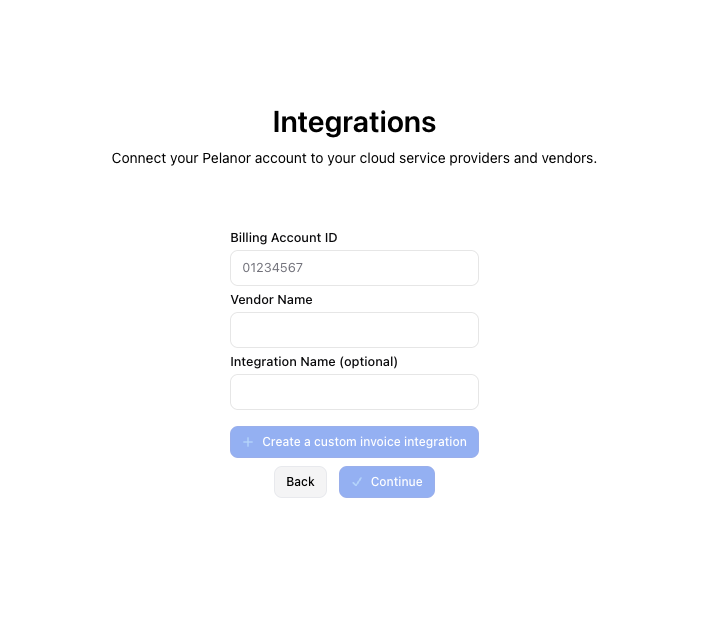
Integration Basics
- One integration per billing account / org ID – create a separate integration for each account
- Data appears in Pelanor dashboards within ≈ 12 hours of upload
- New data for a given month overwrites any previous uploads for that month
Integration Methods
- In-Platform Integration – coming soon
- API Integration – programmatic uploads
US API Docs | EU API Docs
CSV Format Requirements
Required fields
| Field | Description | Format |
|---|---|---|
usage_date | Date when the usage occurred | YYYY-MM-DD |
cost | Cost in USD | Numeric (12.50) |
Optional fields (improve data organisation)
| Field | Description | Shows as* |
|---|---|---|
service_name | Name of the service | vendor name |
usage_type | Type of usage | Custom |
usage_subcategory | Sub-category of usage | Custom |
usage_category | Category of usage | Custom |
payment_kind | Kind of payment | On Demand |
resource_id | Resource identifier | service_name or vendor |
resource_name | Friendly resource name | service_name or vendor |
subaccount | Sub-account identifier | None |
tag:{key_name} | Custom tags | (not displayed) |
region | Region information | None |
availability_zone | Availability Zone | None |
consumption | Quantity consumed | — |
consumption_type | Type of consumption † | Other |
consumption_type valuesData Transferred, Data Processed, CPU Core Hours, Storage, Requests, Item Count, Usage Hours, Other
Creating Your CSV
1
Start with required fields
Begin with
usage_date and cost columns.2
Add optional fields
Add any other columns that improve your categorization and filtering.
3
Format values
Dates must use the
Costs must be numeric—don’t include currency symbols.
YYYY-MM-DD format (e.g., 2025-05-01).Costs must be numeric—don’t include currency symbols.
4
Save the file
Save the file as a
.csv.Data Validation
Pelanor verifies that:- The file is valid CSV
usage_dateandcostare present- Values follow expected formats
consumption_typevalues (if included) are valid
After Integration
- Analyse these costs alongside your cloud providers
- Filter / group by any column you uploaded
- Build dashboards including custom-vendor spend
- Create alerts for unusual spending patterns

